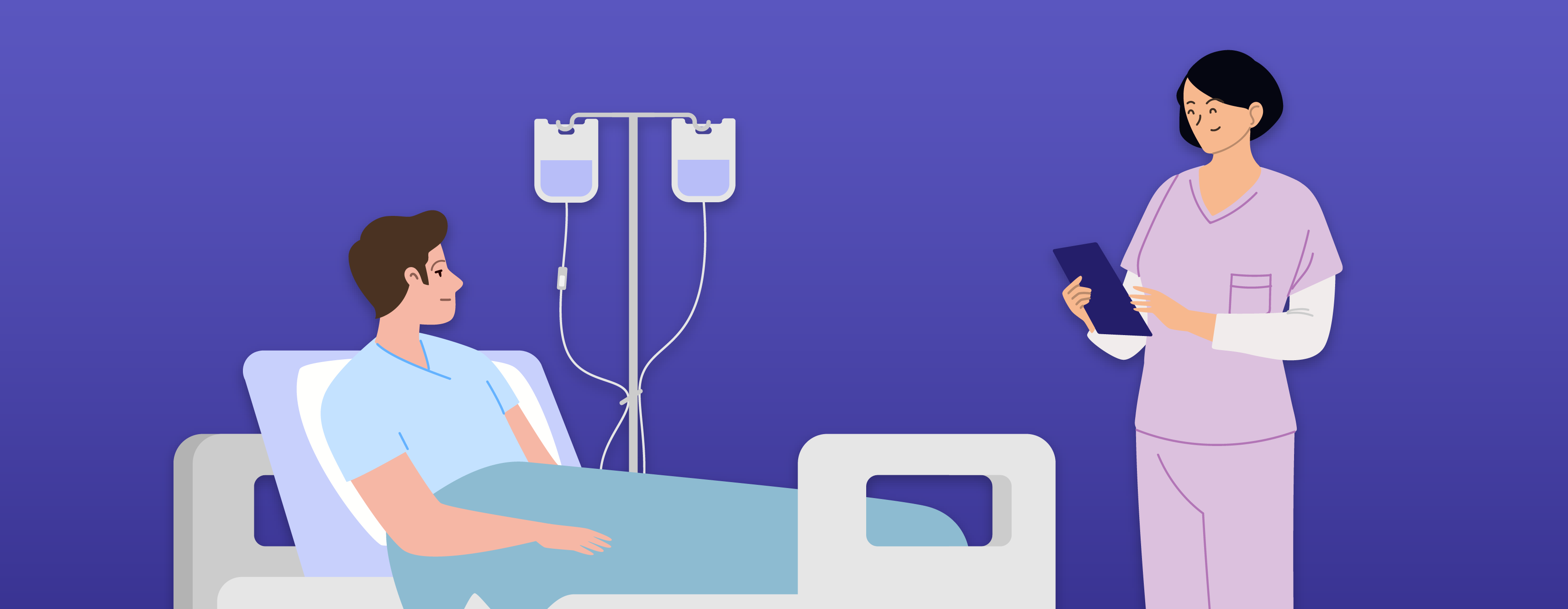Top 10 Ways Virtual Nursing Assistants Improve Patient Monitoring and Care, As Per Healthcare Experts
A virtual nursing assistant (VNA) alters the way a patient, or group of patients, is cared for in the health ecosystem. With the help of NPCs, virtual nursing assistants monitor patients using AI, hence increasing patient care and providing support throughout, enabling more quality to be delivered by the healthcare industry. From assisting patients with daily chores to providing nursing assistance doing telehealth calls, VNAs are revolutionizing the healthcare system. This blog demonstrates the top ten ways VNAs facilitate the process of patient management and monitoring, allowing a more adapted healthcare system.
1. 24/7 Patient Monitoring and Support
constantly monitoring a patient’s vitals especially when a nurse isn’t around is where virtual nursing assistants step in. VNA’S utilize AI-enabled nursing tools and monitor a patient’s activities along with shooting out alarms if everything isn’t right. When a patient has a chronic disease or has just gone through a major surgery getting real-life monitoring can be crucial, therefore these alarms can aid a healthcare professional in making quick decisions.
The use of an effective monitoring system ensures that patients can be closely monitored and cared for without delay which is useful in hospitals that have staffing shortages.
2. Remote Monitoring and Involvement of Patients
The main concern of VNAs revolves around the patients and communicating with them through the internet and other digital means this may include providing assistance and reminders on medications. VNAs encourage patients to stick with their course of treatment by reminding about the medications to be taken, helping the patients perform simple tasks involving their treatment, or providing other essential information.
In instances where patients are located at great distances, virtual care assists them by providing a link between them and a medical facility giving them easier access to healthcare services. This support also helps lower hospital readmissions as they help the patients control their health issues better at home.
3. Relieving the Hospital Staffs Work Pressure
By undertaking simple activities like answering questions that many patients are likely to ask, VNAs greatly assist in lessening the workload of the nurses. This in turn enables the human nurses to concentrate their attention on rarely occurring complex tasks thus increasing the level of productivity.
The normal conversations that get involved in many health care settings have been automated by the use of VNAs. This goes a long way in eliminating the paper work burden and enhancing the efficiency of the health workers. Further automation of this advantage comes from the use of a hospital management system which ensures that the right tasks are prioritized efficiently.
4. Increased Patient Safety and Proactive Measures
By improving the user, patient, and member experience, VNAs ultimately enhance patient security. For example, if there’s a sudden change in the vitals of a patient, like an increase or a drop in heart or oxygen rate, the VNA is capable of sending alerts immediately to the doctor(s). This prevents critical incidents from occurring We can utilize patterns that were flagged by AI algorithms to analyze incidents and escalate them further to professionals for assistance.
5. Automated and Trusted Response Mechanisms
This is especially the case when trying to keep in contact a good number of people spanning over many geographies. By monitoring constantly health data and indices, healthcare professionals could be able to know exactly when to step in. Thus retaining patient security whilst assisting practitioners to do this we can issue alerts that can notify medical personnel as soon as the patient is starting to deteriorate. By employing various techniques such as machine learning, virtual nurse assistants are rapidly evolving and bridging the future gap in medical care.
6. Data Collection Alongside Analysis for Better Outcomes
VNAs gather enormous databases regarding the patient’s health, lifestyle, and compliance with the given treatment regimen. Such information is vital for the health care professionals as it provides them with the background information of the patient regarding his or her progress thus making it easier for them to make care decisions based on facts. It is possible to integrate AI driven nursing tools in a hospital management systems, thus, hospitals can monitor health trends across patient populations, manage risks, and adapt treatment plans where necessary.
Moreover, this data can communicate be the basis of changes in how patients are treated so that the quality of health care can be improved at an even larger scale.
7. Hospital Readmission Rates have Decreased
Virtual nursing assistants continue to assist patients after their discharge by ensuring that they attend all their follow up appointments and take all the required medications. Where care plans are designed, VNAs help patients in sticking to their routine such that complications do not arise, increasing the chances of the patient being readmitted to the hospital.
For hospitals this advantage means cost benefits and better efficiency. Emphasizing on the reduction of readmission rates, VNAs leads to the less unsustainable mode of healthcare whereby prevention and the outcomes from several procedures are emphasized.
8. Innovative Healthcare Workflow System
VNAs enable optimal communication link between patients alongside health care services. For instance, symptoms, questions, or requests for aid can be sent through VNAs and if needed the VNA will reach out to the healthcare provider. This ensures the healthcare teams are well updated about the changes and this allows them to respond in an accurate manner and at a good pace.
In addition, VNAs can address such concerns as medication or treatment specific quires which cuts down the number of questions and requests requiring human’s attention. This seamless information transfer is important in automation in healthcare where the technology makes the response faster and better organized.
9. Enhanced Health Comprehension to Patients

Involving patients in their health is a matter of providing them with guidance. Virtual nursing assistants do not only perform nurses’ duties but they also teach patients about their condition, prescribed medicines alongside treatment plans. This allows them to actively participate in their health.
Education inclusive of health comprehension should assist patients to be more responsible patients therefore increasing their chances of following the prescribed care. Most VNAs are deployed in AI chatbots in healthcare which allows the patients to take charge of their health which in the end instills confidence and makes one feel self-efficacious.
10. Higher Patient Satisfaction Rate and Quality of Care Delivered
Patients who use VNAs pass through a better patient experience as they are sure that assistance will be there for them whenever they may need it. This consistent interplay increases the satisfied level of patients as patients feel that their voice has been heard, that they are supported, and that they are valued. VNA’s also improve the standard of service delivery by anticipating the issues and addressing them and tailoring services to meet their patients’ needs.
And no wonder, patients say such thing because they know they can always count on virtual support even when circumstances would make it difficult to receive in person assistance. This kind of support from VNAs great improves healthcare because it gives focus and watches over the fact that the patients are being cared for, as such, they will greatly appreciate it, thus maximizing patient loyalty and satisfaction.
How Virtual Nursing Assistants Progress Patient Support Inside Hospital Settings
Inside hospitals, VNAs add on to the nursing workforce by assuring that patients have cease communication and ample monitoring through engaging them regularly to carry out minor tasks. And in so doing, patients are assured that they have a stable contact and monitoring of their health, which reduces patient dropout rates and improves patient results. Thus, using VNA’s, hospitals management systems are able to ensure that despite the high number of patients, quality remains constant.
Common Reasons Why Nurses Should Use AI Powered Virtual Nursing Tools
- Non-Stop Monitoring: With the use of VNAs, the health of a patient will be known at all times ensuring that when his/her health changes action is taken immediately.
- Traditional Simpler approach to Care: With reduced readmissions and concise task completions, VNAs have made it possible to drive hospital expenses down towards an effective point.
- Improved Management of Patients: VNAs enable patients to take a more active role in their health by providing them with remote assistance and education.
- Improved Efficiency of Staff: VNAs relieve nursing personnel from answering simple requests or performing basic tasks and enable them to concentrate on important areas of work.
These advantages demonstrate that the AI nursing tools can effectively transform the health care system by offering every patient the opportunity to receive efficient and effective care.
User Experience: Effect of Virtual Nursing Assistants on Patients’ Contentment Level
Virtual nursing assistants are a welcome sight for patients providing them with easy access to assistance. For instance, they can send a text or make a phone call when they feel the need to ask a question, describe their symptoms, or seek care advice. For patients, VNAs increase their assurance that their health is constantly monitored. The ready availability of a Peripheral Vascular Access Device (PVAD) increases the satisfaction of the patients and their confidence in the health care.
In the case of the hospital, VNA’s built into a hospital information system safeguards the staff by handling the queries, appointment reminders, and record updates contributing to smooth and better organised care practices. The patients receive a level of care that is closer to individualised attention which improves their care journey leading to greater satisfaction rates.
Conclusion
Virtual nursing assistants are changing the game as they assist in patient-centered care by providing ongoing assistance, constant monitoring, and always being proactive. Not only do these AI assistants improve how patients feel but they also lessen the burden placed upon workers in a hospital furthering the more viable and reactive healthcare system. Hospitals will be able to keep their patients content at all times since their VNAs along with hospital management systems and AI chatbots in healthcare will be fully deployed, so patient care will be of a high level and will be easily obtainable. Additionally, as the healthcare sector continues to move towards using automation in healthcare, the role of virtual nursing assistants that provide highly reliable and competent nursing services will be more emphasized.
FAQs on Virtual Nursing Assistants and Patient Monitoring
Q: How do virtual nursing assistants improve patient satisfaction?
Virtual nursing assistants enhance patients’ levels of satisfaction as they offer vital coverage to the patients, give individualized attention and respond to the patients’ health questions anytime. This makes the patients feel cared for, as the VNAs offer care round the clock, making the patients’ experience a good one, strengthening their faith in the surgical staff.
Q: What are the top benefits of using AI driven virtual nursing tools?
Apart from these nights being good for pet owners, the other significant advantages are being able to keep track of patients properly, patients being readmitted into hospitals less, being able to treat each patients in a remarkable way and being able to talk freely without restriction. VNA facilitates not only healthcare service providers but patients as well by automating processes and improving total quality of care.
Q: In which way do virtual nurses play a role during the care of patients in hospitals?
A: Virtual nursing assistants take on basic day to day chores, support patients’ engagement as well as help in monitoring various health parameters. They guarantee the quality of care provided to patients by assisting in most of the duties as required by healthcare providers.
Q: In what way do virtual nurses link with a hospital information system?
A: VNAs use Patient records as their main source of information. When working in a hospital, they extract medical histories of patients and observe their health changes over time. Communication within VNAs and other coworkers becomes much easier. This is due to the hospital management system.




